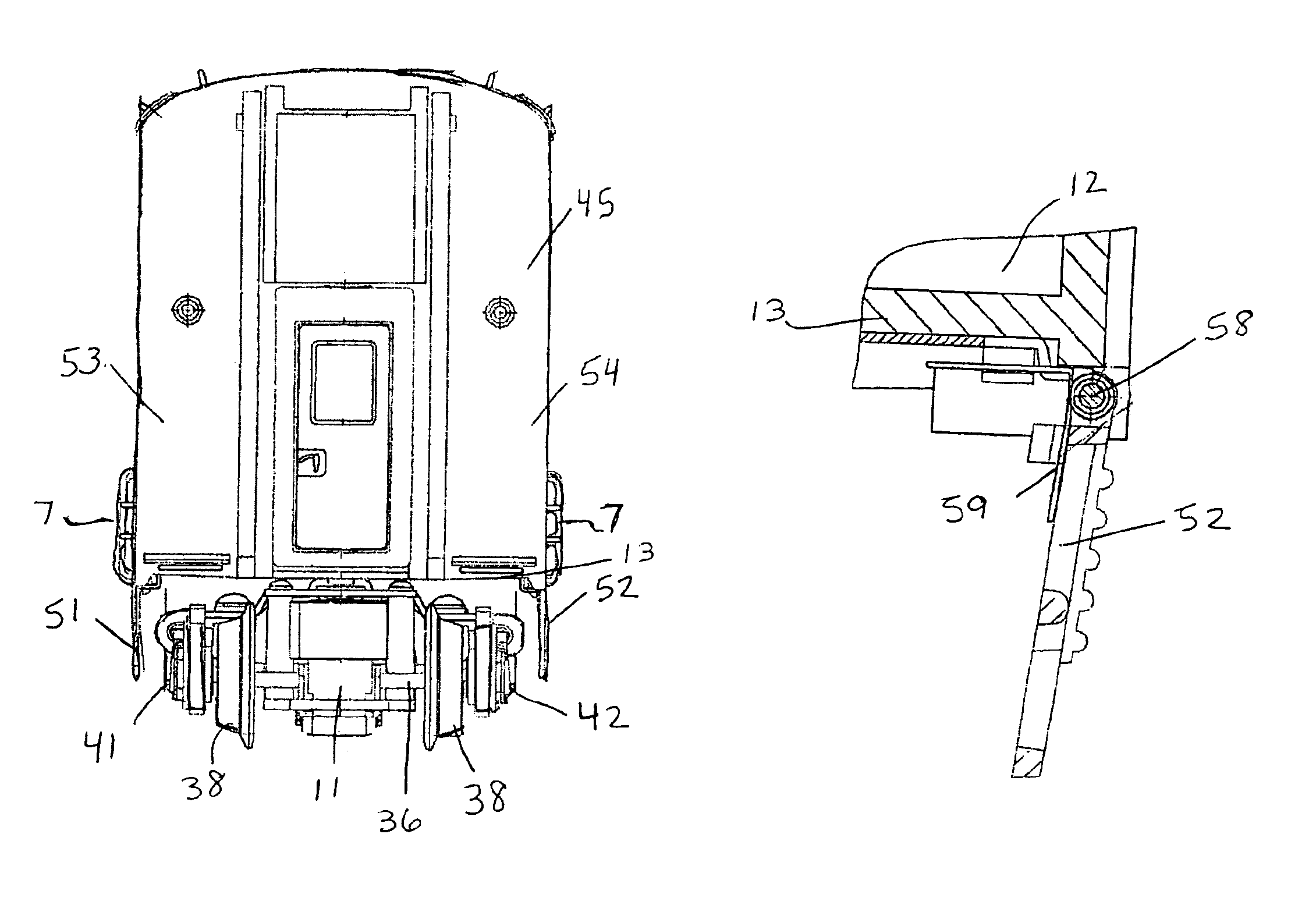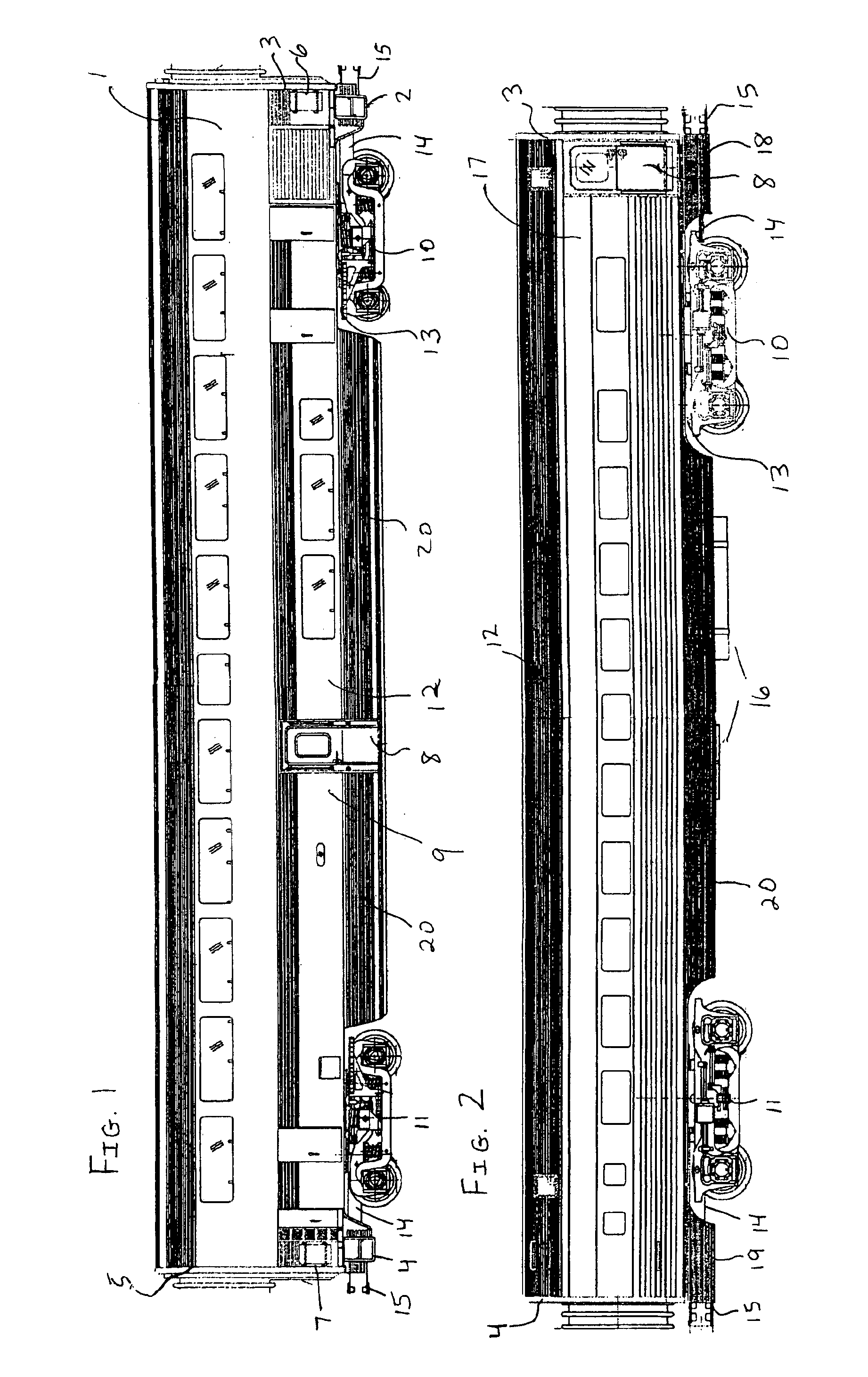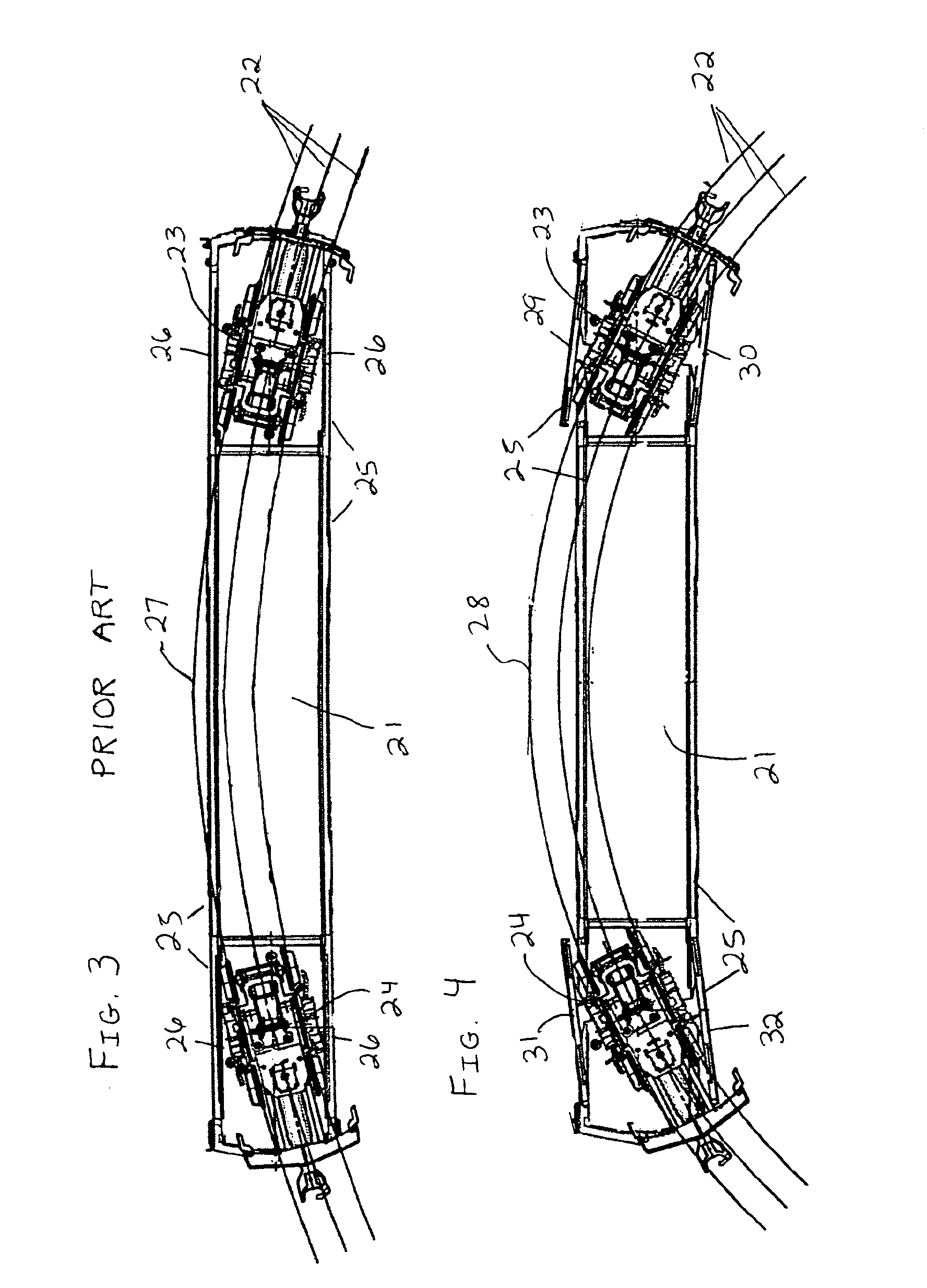Movable model train car parts to aid model train maneuverability as it travels on model railroad track
a technology for model train cars and model railroad tracks, which is applied in the direction of trailer steering, transportation and packaging, and roofs. it can solve the problems of low quality of plastic products, limited hobbyists with small layouts to operate only small length train cars, and low standards for model train manufacturers. achieve the effect of avoiding possible derailment, high standards, and flexibility of movemen
- Summary
- Abstract
- Description
- Claims
- Application Information
AI Technical Summary
Benefits of technology
Problems solved by technology
Method used
Image
Examples
Embodiment Construction
[0042]Referring now to FIG. 1, a model electric train passenger car 1 is presented; the passenger car is designed to include front steps 2 near the front of the car 3 and rear steps 4 near the rear of the car 5. The front steps and rear steps provide access to front ladder 6 and rear ladder 7, respectively. Such steps and ladders on full-size train cars are intended for use by railroad workers and are not intended for use by passengers. Doorways 8 for passengers entering and exiting, in most cases, do not employ steps, but the height of the doors is calculated and designed to be positioned corresponding to platform height at railroad depots along the railroad lines or routes. Typically, the passenger doorways are located either near the center of the train car 9 or at one or both ends of the car.
[0043]It can be observed from FIG. 1 that both the front truck and coupler assembly 10 and the rear truck and coupler assembly 11 of the model car 1 are in close proximity to parts of a trai...
PUM
 Login to View More
Login to View More Abstract
Description
Claims
Application Information
 Login to View More
Login to View More - R&D
- Intellectual Property
- Life Sciences
- Materials
- Tech Scout
- Unparalleled Data Quality
- Higher Quality Content
- 60% Fewer Hallucinations
Browse by: Latest US Patents, China's latest patents, Technical Efficacy Thesaurus, Application Domain, Technology Topic, Popular Technical Reports.
© 2025 PatSnap. All rights reserved.Legal|Privacy policy|Modern Slavery Act Transparency Statement|Sitemap|About US| Contact US: help@patsnap.com



